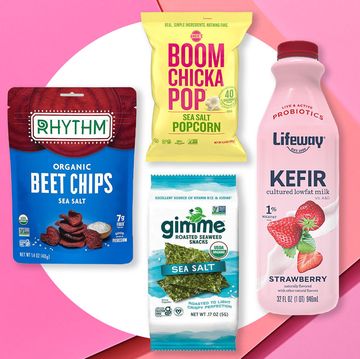Dead skin cells suck the luster from your face. Not only that, but they clog your pores and highlight fine lines too. "As you age, the rate of cell turnover slows, causing flakiness and dullness—unpretty signs that you need to step up your exfoliation routine," says Annet King, director of global education for Dermalogica and The International Dermal Institute. But you can't go overboard either; too much scrubbing and harsh chemicals may cause inflammation, damage, and sensitivity. "The skin on your face is like a precious orchid, not an old houseplant," says King. Here's how to find your sloughing sweet spot, based on your skin type.
Oily or Acne-Prone Skin
Exfoliation works wonders at decongesting clogged pores, making it a must for zit-prone skin. But taking a sandpaper approach can leave you with even more bumps. Use a scrub with small, nourishing jojoba beads, like the ones found in Neutrogena Naturals Purifying Pore Scrub ($8, at drugstores), which smooths skin and controls oil production. (Large granules can tear acne-riddled skin and even lead to infection, says Kate Somerville, an aesthetician in Los Angeles.) Apply a thin, even layer to wet skin, massage in circular motions with medium pressure, then rinse and pat dry. Don't exfoliate more than once a week; experts say scrubbing too often can put sebaceous glands into overdrive, making breakouts worse.
If your acne is really bad, consider going to a dermatologist for a Vitalize Peel every four to six weeks (expect to pay $250 or more per visit), says Elizabeth Tanzi, M.D., codirector of the Washington Institute of Dermatologic Laser Surgery in Washington, D.C. The high concentration of salicylic acid and retinoic acid will speed cell turnover, causing a few days of peeling followed within a week by glowing, polished skin.
Normal Skin
If you're one of the lucky ones who is neither oily nor dry, you can tolerate a variety of exfoliation techniques and deeper pressure, says King. Every other day, apply an alpha-hydroxy-acid cleanser (which loosens and removes dead skin cells) to wet skin and drive it in using a face-massaging device in five-to 10-second intervals. The massager will help the skin-care products penetrate better, even out your skin texture, and give you a rosy glow by stimulating blood flow to your face. Try Olay Pore Minimizing Cleanser + Scrub ($7, at drugstores) and Clarisonic Mia Skin Cleansing System ($149, at Sephora).
To take exfoliation to the max (normal skin can tolerate a more intense approach), add a retinoic acid such as the prescription cream Retin-A to your nightly routine to help speed cell turnover and increase collagen. "It's great for improving tone and texture and reducing wrinkles," says King.
Dry or Sensitive Skin
Sensitive types require a lighter touch and gentler products, says King. Be sure to avoid using strong exfoliants that contain glycolic acid, which travels quickly into sensitive skin's fragile layers. Instead, look to physical exfoliants made with perfectly round synthetic spherules that are less likely to irritate skin the way natural ones can; try Clarins Gentle Refiner Exfoliating Cream ($28.50, at Nordstrom). Wet your face, then massage the product onto your skin using light pressure and small, circular motions (if your face is red immediately after, you've scrubbed too hard). Remember to keep sloughing to a minimum; once a week is just enough to smooth skin without drying it out.
For even suppler skin, add retinol, a vitamin-A derivative that increases cell renewal and enhances collagen production. "Choose an OTC formula, which will be gentler than doctor-prescribed Retin-A," says Tanzi, who advises her patients to apply a time-released formula (the skin absorbs a small but steady dose overnight, minimizing potential irritation) twice a week. Try Philosophy Help Me ($45, sephora.com).













